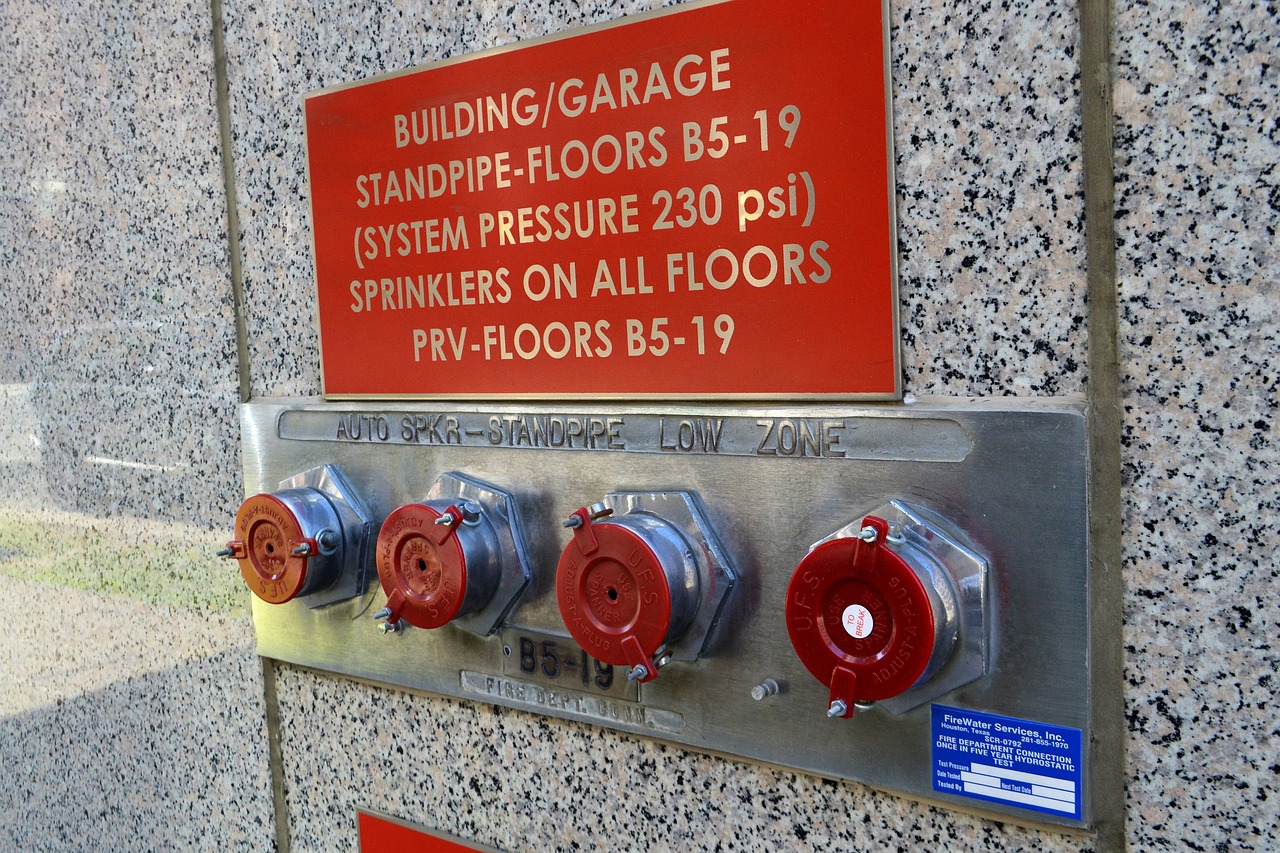Breaking Down the Impact of Human Behavior on Safety Standards
In today's fast-paced world, safety standards are not just a set of rules; they are the backbone of every industry, ensuring that individuals return home safely at the end of the day. However, what many don’t realize is that the effectiveness of these safety standards is profoundly influenced by human behavior. It’s not merely about compliance with regulations; it’s about understanding the psychological, social, and organizational factors that drive individuals to either adhere to or neglect safety practices. So, how do our thoughts, feelings, and interactions shape the landscape of safety? This article aims to unravel the complexities of human behavior and its direct impact on safety standards across various sectors.
Understanding the psychological factors that influence individuals' adherence to safety standards is crucial. At the core of safety compliance lies motivation. When individuals believe that their actions can prevent accidents, they are more likely to follow safety protocols. But what motivates them? Is it fear of punishment, a desire to protect coworkers, or personal beliefs about safety? For example, someone who has witnessed a workplace accident may be more vigilant about following safety procedures, driven by a heightened sense of risk perception. This interplay between motivation and risk perception forms the foundation of safety behavior.
But it’s not just about individual psychology; social dynamics play a significant role in safety compliance. Peer pressure, group norms, and organizational culture can either bolster or undermine safety practices. Imagine a scenario where a new employee notices that their colleagues frequently bypass safety protocols; the tendency to conform can be strong. This is where organizational culture comes into play. A workplace that prioritizes safety and encourages open communication about risks fosters an environment where employees feel empowered to speak up. In contrast, a culture that stigmatizes reporting safety concerns can lead to a dangerous complacency.
Effective leadership is vital for fostering a strong safety culture. Leaders set the tone for safety practices by modeling appropriate behavior and reinforcing the importance of safety standards. When leaders actively participate in safety training and demonstrate a commitment to safety, employees are more likely to mirror that behavior. For instance, a manager who takes the time to conduct regular safety audits and engages employees in discussions about safety protocols creates a culture of accountability and shared responsibility. This shared commitment can significantly enhance adherence to safety standards.
Clear communication is essential for ensuring safety. It’s not enough to simply have safety protocols in place; employees must understand them. Effective communication strategies can enhance safety awareness and compliance among employees. This includes regular safety meetings, clear signage, and accessible safety manuals. Additionally, fostering an environment where employees feel comfortable discussing safety concerns can lead to improved compliance. After all, a well-informed employee is a safer employee.
Training programs are designed to improve safety behavior, but their effectiveness can vary widely. Various training methods, such as hands-on simulations, e-learning modules, and workshops, can instill a culture of safety within organizations. It’s essential to tailor these programs to the specific needs of the workforce. For instance, a construction company might benefit from practical, on-site training that emphasizes real-world scenarios. Evaluating these training methods and adapting them based on feedback can lead to better safety outcomes.
Behavioral economics provides insights into how people make safety-related decisions. It reveals that biases and heuristics can lead to unsafe behaviors. For example, the optimism bias—the belief that bad things are less likely to happen to oneself—can cause individuals to underestimate risks. Understanding these cognitive biases is crucial for developing strategies to mitigate them. By raising awareness and providing clear, actionable guidelines, organizations can encourage safer decision-making among employees.
In our tech-driven age, technology significantly influences safety standards and behaviors. Advancements in technology can enhance safety compliance and reduce human error in various industries. For instance, automated systems can monitor compliance in real-time, alerting employees to potential hazards before they escalate. This proactive approach not only safeguards employees but also fosters a culture of accountability and vigilance.
Wearable devices are revolutionizing safety practices. These technologies can monitor compliance and provide real-time feedback to enhance worker safety. Imagine a construction worker wearing a smart helmet that alerts them to hazardous conditions or fatigue. Such innovations not only improve safety but also empower employees by providing them with the tools they need to stay safe on the job.
The integration of automation in safety processes raises questions about human interaction. While automated systems can significantly reduce human error, it’s essential to analyze the balance between automated systems and human oversight in maintaining safety standards. Over-reliance on automation can lead to complacency, so it’s crucial to foster a culture where human judgment is valued alongside technological solutions.
- How does human behavior impact safety standards? Human behavior influences compliance with safety standards through psychological factors, social dynamics, and organizational culture.
- What role does leadership play in safety culture? Leadership is vital for fostering a culture of safety by modeling behavior and promoting open communication about safety concerns.
- How can technology enhance safety compliance? Technology, such as wearable devices and automated systems, can monitor compliance and provide real-time feedback to improve safety practices.

The Psychology of Safety Compliance
Understanding the psychology behind safety compliance is like peeling an onion; each layer reveals deeper insights into why individuals behave the way they do regarding safety standards. At the core, we find motivation, which can be intrinsic or extrinsic. Intrinsic motivation stems from personal values and beliefs about safety, while extrinsic motivation often comes from external rewards or punishments. For instance, an employee who believes that safety is a personal responsibility is likely to adhere to safety protocols more diligently than one who merely fears disciplinary action.
Another pivotal factor is risk perception. How individuals assess the dangers associated with their work environment can significantly influence their compliance with safety measures. If a worker perceives a low risk of injury, they might be less likely to follow safety protocols. Conversely, when the perceived risk is high, adherence to safety standards tends to increase. This perception is often shaped by past experiences, training, and even the safety culture of the organization they work for.
Moreover, personal beliefs play a crucial role in shaping safety behaviors. For instance, if an employee believes that their organization genuinely cares about their well-being, they are more likely to engage in safe practices. This belief can be cultivated through effective leadership and a transparent organizational culture that prioritizes safety above all else. It's essential to recognize that these psychological factors do not operate in isolation; they are interlinked and can create a ripple effect throughout the workplace.
To illustrate the complex interplay of these factors, consider the following table, which summarizes key psychological influences on safety compliance:
| Factor | Description | Impact on Compliance |
|---|---|---|
| Motivation | Intrinsic and extrinsic drivers that encourage safe behavior. | Higher motivation leads to better adherence to safety standards. |
| Risk Perception | Individual assessment of danger in the workplace. | Low risk perception may result in non-compliance. |
| Personal Beliefs | Individual values regarding safety and organizational commitment. | Positive beliefs enhance compliance and engagement. |
In conclusion, the psychology of safety compliance is multifaceted and requires a comprehensive understanding of various factors. Organizations must strive to enhance motivation, improve risk perception, and foster positive personal beliefs about safety to create a culture where compliance is not just a requirement but a shared value. By doing so, they can significantly reduce workplace incidents and promote a safer working environment for everyone.
- What is the role of motivation in safety compliance? Motivation drives individuals to adhere to safety protocols, whether through personal values or external incentives.
- How does risk perception influence safety behavior? Individuals who perceive a higher risk are more likely to follow safety measures compared to those who see less danger.
- Can organizational culture affect safety compliance? Absolutely! A positive safety culture encourages employees to prioritize safety, enhancing overall compliance.

Social Influences on Safety Practices
When we think about safety in the workplace, it's easy to focus solely on the rules and regulations that govern how we operate. However, a deeper look reveals that social influences play a critical role in shaping our adherence to these safety practices. Have you ever noticed how your behavior changes when you're in a group versus when you're alone? This phenomenon is often referred to as social dynamics, and it can significantly impact how individuals perceive and implement safety measures.
The concept of peer pressure is one of the most powerful social influences affecting safety practices. Imagine you're in a construction zone, and everyone around you is wearing their safety gear. There's a strong likelihood that you'll follow suit, not just because it's the rule, but because you want to fit in with your peers. Conversely, if you're in an environment where others are taking shortcuts or ignoring safety protocols, you might feel tempted to do the same. This behavior can lead to a dangerous cycle where safety becomes a secondary concern, overshadowed by the desire to conform.
Another important aspect is group norms. These unwritten rules dictate what is considered acceptable behavior within a team or organization. For instance, if a company's culture promotes a lax attitude towards safety, employees might adopt similar beliefs, believing that it's okay to skip certain safety measures. This is where the role of organizational culture becomes critical. A strong safety culture, where safety is prioritized and openly discussed, can counteract negative social influences. When leadership actively promotes safety as a core value, it sets a standard that encourages everyone to comply.
To illustrate the impact of social influences on safety practices, consider the following table that summarizes key factors:
| Social Influence | Description | Impact on Safety |
|---|---|---|
| Peer Pressure | The influence exerted by peers to conform to group behavior. | Can lead to compliance or risky behavior based on group actions. |
| Group Norms | Unwritten rules that dictate acceptable behavior within a group. | Can either enhance or undermine safety practices, depending on the norm. |
| Organizational Culture | The shared values and beliefs within an organization. | A strong safety culture promotes adherence to safety protocols. |
Moreover, the role of leadership cannot be overstated. Leaders set the tone for safety practices within their organizations. When leaders prioritize safety, it sends a clear message that compliance is essential. They can encourage open discussions about safety concerns, leading to a more engaged workforce. This engagement fosters an environment where individuals feel comfortable voicing their concerns and suggesting improvements, ultimately enhancing the overall safety culture.
In conclusion, social influences are a powerful force in shaping safety practices. By understanding the dynamics of peer pressure, group norms, and organizational culture, we can create a safer working environment. It’s not just about following rules; it’s about fostering a community where safety is valued and prioritized. So, next time you put on your hard hat or safety goggles, remember that you’re not just protecting yourself—you’re also contributing to a culture of safety that benefits everyone.
- How does peer pressure affect safety compliance?
Peer pressure can lead individuals to either follow safety protocols to fit in or ignore them if their peers are doing so. It plays a significant role in shaping behavior in group settings. - What is the importance of organizational culture in safety?
A strong organizational culture that prioritizes safety can motivate employees to adhere to safety practices and encourage open communication about safety issues. - How can leaders promote a strong safety culture?
Leaders can promote safety by setting clear expectations, encouraging open dialogue, and recognizing employees who prioritize safety in their work.

The Role of Leadership in Safety Culture
When it comes to establishing a robust safety culture within any organization, the role of leadership cannot be overstated. Effective leaders are like the captains of a ship navigating through turbulent waters; they set the course and ensure that everyone on board understands the importance of safety. But how exactly do leaders influence safety culture? It all boils down to their ability to inspire, communicate, and model the behaviors they wish to see in their teams.
First and foremost, leaders must communicate the vision of safety clearly and consistently. This means not only articulating safety goals but also demonstrating a genuine commitment to achieving them. When leaders prioritize safety in their daily operations, it sends a powerful message to employees that safety is not just a checkbox on a compliance form; it is a core value of the organization. For instance, regular safety meetings, open-door policies for safety concerns, and visible participation in safety drills can significantly enhance employees' perception of leadership's commitment to safety.
Moreover, leaders should actively engage in modeling safe behaviors. Employees often look to their leaders for cues on how to act. If a manager consistently wears personal protective equipment (PPE) and follows safety protocols, employees are more likely to do the same. This is where the concept of leading by example comes into play. When leaders embody the safety standards they expect from their teams, it fosters a culture where safety becomes a shared responsibility.
Another critical aspect of leadership in safety culture is encouraging open communication. Employees should feel safe to voice their concerns or report unsafe conditions without fear of retribution. Leaders can facilitate this by creating an environment where feedback is welcomed and acted upon. For example, implementing anonymous reporting systems or regular feedback sessions can empower employees to participate actively in safety practices. When individuals feel their voices matter, they are more likely to engage with safety protocols seriously.
In addition to communication, leaders should invest in training and development programs that emphasize the importance of safety. Providing comprehensive training not only equips employees with the necessary skills but also reinforces the organization's commitment to safety. When employees see that their leaders are willing to invest time and resources into their safety education, it cultivates a sense of loyalty and responsibility towards maintaining a safe work environment.
To summarize, the role of leadership in fostering a safety culture is multifaceted. Leaders must communicate effectively, model safe behaviors, encourage open dialogue, and invest in training. By doing so, they create an environment where safety is prioritized, and every employee feels responsible for upholding safety standards. This proactive approach not only enhances compliance but also contributes to a more engaged and motivated workforce.
- How can leaders effectively communicate safety protocols? Leaders can use regular meetings, newsletters, and training sessions to consistently communicate safety protocols and updates.
- What are some ways leaders can model safe behavior? Leaders can model safe behavior by consistently using PPE, following safety guidelines, and participating in safety drills.
- Why is open communication important for safety culture? Open communication allows employees to report unsafe conditions without fear, fostering a culture of accountability and improvement.
- How can training programs enhance safety culture? Training programs enhance safety culture by equipping employees with knowledge and skills while demonstrating the organization's commitment to their safety.

Communication Strategies for Safety Awareness
Effective communication is the backbone of any successful safety program. When it comes to safety awareness, the way information is conveyed can significantly impact how well safety standards are understood and followed. Think of communication as the thread that weaves together the fabric of a safety culture; without it, that fabric is weak and prone to tearing. So, how can organizations enhance their communication strategies to boost safety awareness?
One of the most important aspects of communication is clarity. Information should be presented in a straightforward manner, free from jargon that may confuse employees. For instance, using simple language and visual aids can help ensure that everyone understands safety protocols. Imagine trying to navigate a complex map without a legend; it’s easy to get lost. Similarly, when safety instructions are complicated, the risk of misunderstanding increases, leading to potential hazards.
Another critical strategy is to foster an open dialogue about safety. Encouraging employees to voice their concerns and share their experiences creates a culture of transparency. When workers feel safe to speak up, they are more likely to report unsafe conditions or practices, which can be addressed promptly. This two-way communication can be facilitated through regular safety meetings, suggestion boxes, or even digital platforms where employees can anonymously share their thoughts.
Moreover, leveraging technology can significantly enhance communication efforts. For example, organizations can use mobile apps or online platforms to disseminate safety information quickly. These tools can provide real-time updates on safety protocols, upcoming training sessions, or even emergency procedures. Imagine receiving a notification on your phone about a safety drill; it keeps everyone informed and prepared, reducing panic in critical situations.
Visual communication plays a vital role in safety awareness as well. Utilizing posters, infographics, and videos can make safety information more engaging and memorable. For instance, a well-designed infographic that outlines the steps to take in case of a fire can be more effective than a lengthy manual. The use of imagery not only captures attention but also helps in retaining information, making it easier for employees to recall safety procedures when needed.
Lastly, regular training and refresher courses are essential for keeping safety awareness at the forefront of employees' minds. Training sessions should not be one-off events; rather, they should be ongoing to reinforce the importance of safety practices. Incorporating interactive elements into training, such as role-playing scenarios or hands-on demonstrations, can make the learning experience more impactful. After all, practice makes perfect! When employees actively participate in their training, they are more likely to internalize the safety protocols.
In summary, effective communication strategies for safety awareness encompass clarity, open dialogue, technology utilization, visual aids, and ongoing training. By implementing these strategies, organizations can create a robust safety culture where everyone feels responsible for maintaining a safe working environment. Remember, safety is not just a set of rules; it’s a shared commitment that thrives on effective communication.
- What are the key elements of effective safety communication?
Key elements include clarity, openness, the use of technology, visual aids, and ongoing training.
- How can technology improve safety communication?
Technology can provide real-time updates, facilitate reporting, and enhance training through interactive platforms.
- Why is visual communication important in safety awareness?
Visual communication helps capture attention and improve information retention, making safety procedures easier to recall.
- How often should safety training be conducted?
Safety training should be ongoing, with regular refresher courses to reinforce knowledge and practices.

Training Programs and Their Effectiveness
When it comes to enhancing safety standards in any organization, training programs play a pivotal role. These programs are not merely a checkbox to tick off; they are the backbone of a robust safety culture. Think of them as the foundation of a house—without a solid base, everything else is at risk. But what makes a training program effective? It’s not just about the content but also about how that content is delivered and received.
First and foremost, the effectiveness of training programs largely hinges on their relevance. This means that the training must be tailored to the specific risks and challenges faced by the organization. For example, a construction company will have vastly different safety training needs compared to a healthcare facility. Therefore, understanding the unique environment and potential hazards is crucial. A well-structured training program should include:
- Real-life scenarios: Incorporating real-life situations helps employees relate better to the training material.
- Interactive elements: Engaging employees through hands-on activities can significantly enhance retention.
- Regular updates: Safety standards and regulations are constantly evolving, so training should be updated accordingly.
Another critical aspect of effective training is the delivery method. Traditional classroom settings can often lead to disengagement, especially if the material is dry or overly technical. Incorporating multimedia elements, such as videos and interactive modules, can make the training more engaging. Moreover, utilizing e-learning platforms allows for flexibility, enabling employees to learn at their own pace while still maintaining a connection to the material.
Furthermore, the role of feedback cannot be overstated. After a training session, gathering feedback from participants can provide invaluable insights into what worked and what didn’t. It allows organizations to continually refine their programs. Additionally, conducting assessments or quizzes can help gauge understanding and retention of the material presented.
To illustrate the impact of effective training, consider a study conducted by the National Safety Council, which found that organizations that implemented comprehensive safety training saw a 50% reduction in workplace accidents. This statistic underscores the importance of investing in quality training programs. The table below summarizes key findings from various studies on the effectiveness of training programs:
| Study | Findings |
|---|---|
| National Safety Council | 50% reduction in workplace accidents with comprehensive training |
| OSHA Report | Training can reduce injury rates by up to 30% |
| Harvard Business Review | Companies with strong training programs outperform their peers by 24% |
In conclusion, the effectiveness of training programs in promoting safety cannot be underestimated. By focusing on relevance, delivery methods, and ongoing feedback, organizations can cultivate a culture of safety that not only complies with regulations but also genuinely protects their employees. After all, a well-trained workforce is not just an asset; it’s a lifeline that can save lives and prevent injuries.
Q: How often should safety training be conducted?
A: Safety training should be conducted regularly, at least annually, but more frequent sessions may be necessary depending on the industry and specific risks involved.
Q: What are the key components of an effective safety training program?
A: Key components include relevance to the job, engaging delivery methods, real-life scenarios, and continuous feedback and assessment.
Q: Can technology enhance safety training?
A: Absolutely! Technologies such as virtual reality (VR) and e-learning platforms can make training more interactive and accessible.

Behavioral Economics and Safety Decision-Making
When we talk about safety in the workplace, it's essential to consider the fascinating world of behavioral economics. This branch of economics dives deep into how psychological factors influence our decision-making processes, particularly when it comes to safety. Imagine walking through a construction site. You see the signs that say, "Wear your helmet!" but what makes someone choose to comply or ignore that directive? The answer often lies in the intricate dance between our cognitive biases and the environment around us.
At the heart of this discussion is the concept of risk perception. People often underestimate risks in familiar environments while overestimating them in new situations. For instance, a seasoned worker may feel invincible on the job, believing that their experience protects them from accidents. This overconfidence can lead to risky behaviors, such as skipping safety gear. On the flip side, a newcomer might be overly cautious, hesitating to act due to fear of the unknown. Both scenarios highlight how our perceptions can skew our safety-related decisions.
Furthermore, let's consider the role of cognitive biases. These are systematic patterns of deviation from norm or rationality in judgment, and they can significantly impact safety compliance. Some common biases include:
- Optimism Bias: The belief that negative events are less likely to happen to oneself compared to others.
- Anchoring: Relying too heavily on the first piece of information encountered when making decisions.
- Availability Heuristic: Overestimating the importance of information that is readily available, often due to recent experiences.
Understanding these biases is crucial for organizations aiming to improve safety standards. By recognizing how these mental shortcuts affect decision-making, companies can implement strategies to mitigate their impact. For example, they can provide regular training sessions that emphasize the importance of safety protocols, helping to reshape employees' perceptions and biases over time.
Moreover, the concept of nudge theory comes into play here. A "nudge" is a subtle change in the environment that encourages people to make better decisions without restricting their choices. For instance, rearranging the layout of a workspace to place safety equipment in more accessible locations can significantly increase compliance rates. Instead of a worker having to walk across the site to grab a helmet, placing it at the entrance can serve as a gentle reminder to wear it. This small change can lead to a huge difference in safety outcomes.
In conclusion, the intersection of behavioral economics and safety decision-making reveals a complex landscape where human psychology significantly influences our adherence to safety standards. By understanding the underlying behavioral factors, organizations can develop more effective strategies to promote a culture of safety. This not only protects employees but also enhances overall productivity and morale. After all, a safe workplace is a happy workplace!
Q: How does behavioral economics apply to safety in the workplace?
A: Behavioral economics explores how psychological factors, such as biases and risk perception, influence decision-making regarding safety compliance. Understanding these factors helps organizations design better safety protocols.
Q: What is nudge theory, and how can it improve safety?
A: Nudge theory involves making subtle changes in the environment that encourage safer behavior without restricting choices. For example, placing safety gear in visible and accessible locations can prompt employees to use them more regularly.
Q: Can training programs change employees' perceptions of risk?
A: Yes! Regular training can help reshape employees' risk perceptions and reduce cognitive biases, leading to improved safety compliance and decision-making.

Impact of Technology on Safety Behavior
In today's fast-paced world, the impact of technology on safety behavior cannot be overstated. From construction sites to manufacturing plants, technology has become an indispensable ally in promoting safety standards. Imagine walking onto a job site where every worker is equipped with cutting-edge tools that not only enhance productivity but also safeguard their well-being. This is not just a dream; it’s a reality made possible by technological advancements.
One of the most significant ways technology influences safety behavior is through the introduction of real-time monitoring systems. These systems utilize sensors and IoT devices to track various safety parameters, such as exposure to hazardous materials or compliance with safety protocols. For instance, if a worker is operating machinery without the appropriate protective gear, the system can send immediate alerts to both the worker and their supervisor. This instant feedback loop not only promotes adherence to safety standards but also fosters a culture of accountability.
Moreover, technology facilitates data collection and analysis, allowing organizations to identify safety trends and potential hazards before they escalate into serious incidents. By analyzing historical data, companies can pinpoint areas where safety compliance is lacking and implement targeted training programs. For example, if data shows a spike in accidents during a specific shift, management can investigate the root causes and take corrective actions, such as increasing supervision or adjusting work schedules.
Another fascinating aspect of technology in safety behavior is the rise of wearable safety devices. These gadgets, such as smart helmets and vests equipped with sensors, monitor workers' vital signs and environmental conditions. Imagine a construction worker wearing a smart helmet that alerts them if they are becoming fatigued or if the surrounding area reaches dangerous temperature levels. This proactive approach not only protects employees but also empowers them to take ownership of their safety.
However, while technology offers numerous benefits, it also raises questions about human interaction and oversight. The integration of automation in safety processes can sometimes lead to complacency among workers. If employees rely too heavily on automated systems, they may become less vigilant about their surroundings. Striking a balance between automated safety measures and human oversight is crucial to maintaining high safety standards. Organizations must ensure that employees remain engaged and aware, even when technology is doing much of the heavy lifting.
To summarize, technology is reshaping the landscape of safety behavior in remarkable ways. From real-time monitoring systems to wearable devices, it enhances compliance, promotes accountability, and empowers workers. Yet, as we embrace these advancements, we must remain vigilant about the human element in safety practices. After all, technology is a tool, and like any tool, its effectiveness depends on how we use it.
- How does technology improve safety in the workplace?
Technology enhances safety by providing real-time monitoring, data analysis, and wearable devices that alert workers to hazards. - Can technology replace human oversight in safety practices?
While technology can significantly aid safety, human oversight is still essential to ensure vigilance and accountability. - What are wearable safety devices?
Wearable safety devices are gadgets like smart helmets and vests that monitor workers' health and environmental conditions to enhance safety.

Wearable Safety Devices
In today's fast-paced world, are transforming the landscape of workplace safety. These innovative gadgets, which can range from smart helmets to health-monitoring wristbands, are designed to keep workers safe while also enhancing their productivity. Imagine a construction worker wearing a helmet equipped with sensors that detect hazardous conditions—this isn't just a futuristic dream; it's happening right now! These devices act as a second pair of eyes, constantly monitoring the environment for potential risks and alerting the wearer in real-time.
One of the most significant advantages of wearable safety devices is their ability to provide real-time feedback. For instance, if a worker is exposed to harmful levels of noise or toxic gases, the device can trigger an alarm, prompting immediate action to mitigate the risk. This proactive approach can be a game-changer in industries such as construction, manufacturing, and healthcare, where the stakes are incredibly high. Furthermore, the data collected from these devices can be analyzed to identify patterns and trends in workplace safety, allowing organizations to make informed decisions about their safety protocols.
Moreover, the integration of wearable safety technology into daily operations fosters a culture of safety awareness. Employees become more conscious of their surroundings and the potential hazards they face. When workers see that their employer is investing in their safety through advanced technology, it can boost morale and reinforce the importance of adhering to safety standards. This is not just about compliance; it's about creating an environment where safety is valued and prioritized.
However, it’s essential to consider the challenges associated with implementing wearable safety devices. For example, there may be concerns regarding privacy and data security. Employees might feel uneasy about their movements being tracked or their health data being monitored. Organizations must address these concerns transparently, ensuring that data is used solely for safety purposes and that employees are aware of how their information is being handled.
To illustrate the impact of wearable safety devices, let’s take a look at a few examples:
| Device | Functionality | Industry |
|---|---|---|
| Smart Helmet | Detects environmental hazards and provides augmented reality overlays | Construction |
| Health Monitoring Wristband | Tracks vital signs and alerts for abnormal readings | Healthcare |
| Safety Vests with GPS | Monitors location and provides alerts for unsafe zones | Logistics |
In conclusion, wearable safety devices represent a significant leap forward in ensuring worker safety. As technology continues to evolve, we can expect even more sophisticated solutions to emerge, making workplaces safer and more efficient. The key is to embrace these innovations while also addressing the concerns that come with them. After all, a safe worker is a happy worker, and a happy worker is a productive one!
- What are wearable safety devices? Wearable safety devices are gadgets designed to monitor safety conditions and enhance worker safety in various industries.
- How do these devices improve workplace safety? They provide real-time feedback, detect hazards, and promote a culture of safety awareness among employees.
- Are there privacy concerns with wearable safety devices? Yes, employees may have concerns regarding their data privacy and how their information is used.
- What industries benefit the most from wearable safety devices? Industries such as construction, healthcare, and logistics benefit significantly from these technologies.

Automation and Human Interaction
The integration of automation into safety processes is like adding a powerful engine to a well-oiled machine. It promises efficiency, precision, and the ability to minimize human error. However, as we embrace these advanced technologies, we must also consider the delicate dance between automated systems and human oversight. How do we ensure that while machines take over repetitive tasks, humans remain engaged and vigilant in safety practices? This question is at the heart of the discussion on automation and human interaction.
In many industries, automation has transformed the way safety protocols are implemented. For instance, in manufacturing, robotic arms can handle hazardous materials, reducing the risk of injury to human workers. Yet, this shift raises critical concerns about the role of human oversight. Are we becoming too reliant on machines? The answer lies in finding a balance. Humans must not only interact with these systems but also maintain a level of situational awareness that machines cannot replicate. This is where the concept of collaborative safety comes into play.
To illustrate this point, consider the aviation industry. Pilots now work alongside highly sophisticated autopilot systems. While these systems can handle most flight operations, pilots are trained to monitor and take control when necessary. This synergy between human intuition and machine efficiency is crucial for maintaining safety standards. It’s a classic example of how automation can enhance safety when combined with skilled human judgment.
Moreover, communication between automated systems and human operators is essential. When a machine detects a potential hazard, it must alert the human operator in a clear and understandable manner. This interaction can be facilitated through various technologies, such as dashboards that display real-time data or alarms that signal when action is required. Ensuring that this communication is effective can significantly reduce the likelihood of accidents.
However, the challenge lies in designing these systems to be user-friendly and intuitive. If operators find the technology complicated or overwhelming, it can lead to frustration and disengagement, ultimately compromising safety. Therefore, organizations must invest in training programs that not only teach employees how to use these automated systems but also emphasize the importance of their role in the safety ecosystem.
In summary, while automation can greatly enhance safety standards, it is imperative to foster a culture where human interaction remains a central component. By striking the right balance between technology and human oversight, organizations can create a safer working environment that leverages the strengths of both. The future of safety lies in this harmonious collaboration, where machines and humans work together to achieve optimal outcomes.
- What is the role of automation in safety standards?
Automation helps reduce human error and enhances efficiency in safety processes, but it requires human oversight to ensure comprehensive safety management. - How can organizations ensure effective communication between humans and automated systems?
Organizations can implement user-friendly interfaces and provide training to ensure clear communication and understanding of the systems in use. - What are the risks of over-reliance on automation?
Over-reliance can lead to complacency among workers, potentially increasing the risk of accidents if human oversight is minimized. - How can training programs improve safety behavior in automated environments?
Training programs can equip employees with the necessary skills to interact effectively with automated systems, reinforcing their critical role in maintaining safety.
Frequently Asked Questions
- What psychological factors influence safety compliance?
Several psychological factors play a crucial role in safety compliance, including motivation, risk perception, and personal beliefs. When individuals feel motivated to adhere to safety standards, they are more likely to follow protocols. Additionally, how they perceive risks can significantly impact their behavior—if they view a situation as dangerous, they are more likely to take precautions.
- How do social influences affect safety practices in the workplace?
Social dynamics, such as peer pressure and group norms, heavily influence safety practices. If a workplace culture prioritizes safety, employees are more likely to adhere to safety protocols. Conversely, if unsafe behaviors are normalized, individuals may feel pressured to conform, compromising their safety and that of others.
- What is the role of leadership in promoting a safety culture?
Leadership plays a pivotal role in fostering a strong safety culture. Effective leaders can influence employee behavior by setting clear expectations, modeling safe practices, and encouraging open communication about safety concerns. When leaders prioritize safety, it creates a shared commitment among employees to adhere to safety standards.
- Why is clear communication important for safety awareness?
Clear communication is essential for ensuring that all employees understand safety protocols and the importance of compliance. Effective communication strategies, such as regular safety meetings and accessible informational resources, help reinforce safety awareness and ensure that everyone is on the same page.
- How effective are training programs in improving safety behavior?
Training programs can be highly effective in instilling a culture of safety within organizations. Various methods, such as hands-on training and simulations, can enhance employees' understanding of safety protocols and the consequences of unsafe behavior. Regular refresher courses also help keep safety top of mind.
- What insights does behavioral economics provide regarding safety decision-making?
Behavioral economics offers valuable insights into how biases and heuristics affect safety-related decisions. Understanding these cognitive shortcuts can help organizations identify potential pitfalls in safety compliance and implement strategies to mitigate unsafe behaviors, such as providing reminders or incentives for safe practices.
- How does technology impact safety behavior?
Technology significantly enhances safety standards and behaviors by providing tools that improve compliance and reduce human error. Innovations like safety apps and monitoring systems can track adherence to safety protocols and provide real-time feedback, thereby fostering a safer work environment.
- What are wearable safety devices, and how do they enhance safety practices?
Wearable safety devices are innovative tools that monitor compliance with safety protocols and provide real-time feedback to workers. These devices can track vital signs, detect hazardous environments, and alert users to potential dangers, making them invaluable assets in enhancing worker safety.
- What is the balance between automation and human interaction in safety processes?
Finding the right balance between automation and human oversight is crucial in maintaining safety standards. While automation can reduce human error and streamline safety processes, human interaction remains essential for making judgment calls and responding to unforeseen circumstances. Organizations must ensure that automated systems are complemented by trained personnel who can intervene when necessary.



















